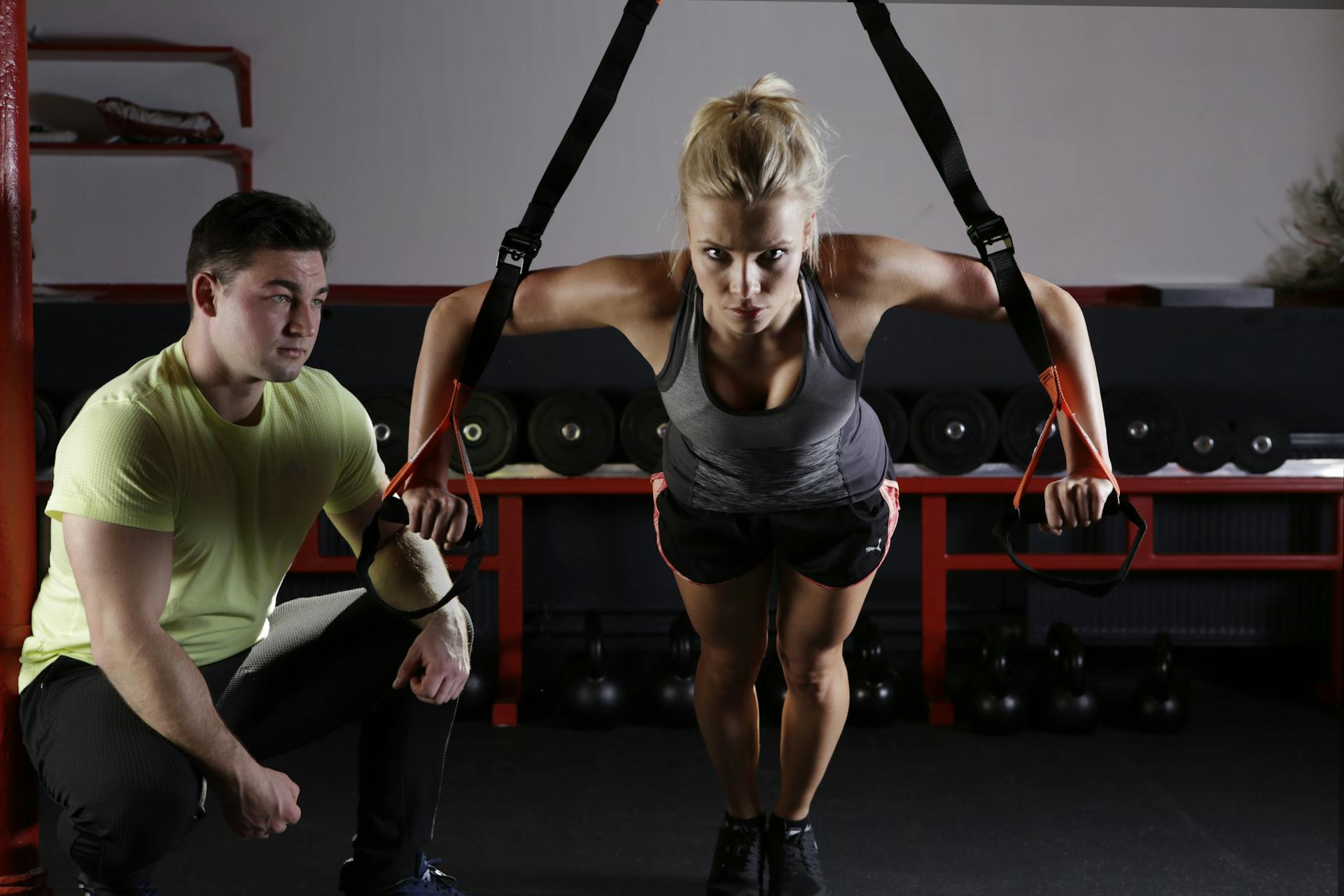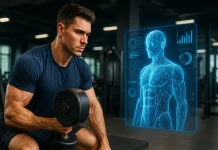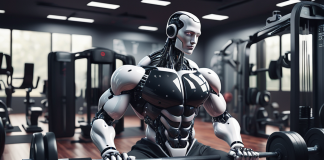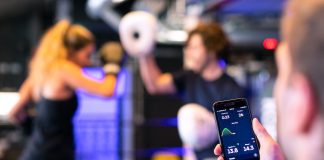Last Updated on June 6, 2024
The fitness industry has witnessed a significant shift in recent years, with the advent of AI-powered personalized workouts. This innovative approach leverages artificial intelligence to create customized exercise plans tailored to an individual’s unique fitness level, goals, and preferences. By harnessing the capabilities of AI-powered personalized workouts, fitness enthusiasts can now enjoy a more effective, efficient, and enjoyable workout experience.
Understanding the Need for Personalized Workouts
Traditional group fitness classes often struggle to cater to the diverse needs and goals of participants. One-size-fits-all workout plans can lead to frustration, plateaus, and even injuries. Moreover, the lack of personalized attention can result in a lack of motivation and engagement. AI-powered personalized workouts aim to address these limitations by providing tailored exercise plans that cater to an individual’s specific requirements.
How AI-Powered Personalized Workouts Work?
AI-powered personalized workouts utilize machine learning algorithms to analyze an individual’s fitness data, including their:
- Fitness Level: AI assesses the individual’s current fitness level, including their strength, endurance, and flexibility.
- Goals: AI identifies the individual’s specific fitness goals, such as weight loss, muscle gain, or improved overall health.
- Preferences: AI takes into account the individual’s exercise preferences, including their preferred exercises, intensity levels, and workout duration.
Using this data, AI generates a customized workout plan that:
- Adapts to Progress: As the individual progresses, AI adjusts the workout plan to ensure continued challenge and progress.
- Minimizes Injuries: AI incorporates exercises that are tailored to the individual’s strengths and weaknesses, reducing the risk of injury.
- Maximizes Engagement: AI incorporates exercises that the individual enjoys, increasing motivation and engagement.
Benefits of AI-Powered Personalized Workouts
The benefits of AI-powered personalized workouts are numerous:
- Improved Results: AI-powered workouts lead to more effective and efficient workouts, resulting in faster progress and better overall fitness.
- Increased Motivation: AI-powered workouts cater to individual preferences, increasing motivation and engagement.
- Reduced Risk of Injury: AI-powered workouts minimize the risk of injury by incorporating exercises tailored to the individual’s strengths and weaknesses.
- Enhanced User Experience: AI-powered workouts provide a more enjoyable and personalized workout experience, leading to increased user satisfaction.
Real-World Applications of AI-Powered Personalized Workouts
AI-powered personalized workouts have numerous real-world applications:
- Fitness Apps: AI-powered fitness apps, such as Nike Training Club and Fitstar, offer customized workout plans based on individual fitness data.
- Gyms and Studios: Many gyms and studios now offer AI-powered personalized workouts, providing a more tailored experience for their members.
- Personal Trainers: AI-powered personalized workouts can be used by personal trainers to create customized plans for their clients.
Challenges and Limitations of AI-Powered Personalized Workouts
While AI-powered personalized workouts offer numerous benefits, there are also challenges and limitations:
- Data Quality: The accuracy of AI-powered workouts relies heavily on the quality of the data used to generate the workout plan.
- Limited Understanding of Human Behavior: AI algorithms may not fully understand human behavior and motivation, which can impact the effectiveness of the workout plan.
- Dependence on Technology: AI-powered workouts may require a high level of technical proficiency, which can be a barrier for some individuals.
How does AI determine the best exercises for different fitness goals?
AI determines the best exercises for different fitness goals through a combination of data analysis, machine learning algorithms, and expert input. Here are the key steps involved:
- Data Collection: AI collects data on various fitness metrics, including:
- Fitness Level: AI assesses the individual’s current fitness level, including their strength, endurance, and flexibility.
- Goals: AI identifies the individual’s specific fitness goals, such as weight loss, muscle gain, or improved overall health.
- Preferences: AI takes into account the individual’s exercise preferences, including their preferred exercises, intensity levels, and workout duration.
- Data Analysis: AI uses machine learning algorithms to analyze the collected data and identify patterns and trends. This helps AI to:
- Understand How the Body Responds: AI understands how the body responds to different exercises and intensities, allowing it to fine-tune workout plans.
- Detect Biomechanical Imbalances: AI identifies any potential imbalances or inefficiencies in the individual’s movement patterns, enabling it to customize exercises that target specific muscle groups or address specific movement issues.
- Exercise Selection: AI uses the analyzed data to select exercises that are tailored to the individual’s specific needs and goals. This includes:
- Exercise Type: AI suggests exercises that are most effective for the individual’s fitness goals, such as weightlifting for muscle gain or cardio exercises for endurance.
- Intensity and Frequency: AI adjusts the intensity and frequency of exercises based on the individual’s fitness level and progress.
- Variety and Progression: AI incorporates a variety of exercises and adjusts the intensity and complexity of workouts to ensure continued progress and prevent plateaus.
- Real-Time Feedback and Adaptation: AI provides real-time feedback and guidance during workouts, correcting form and pacing to ensure exercises are performed safely and effectively. This feedback loop allows AI to continuously adapt and adjust the workout plans based on the individual’s progress and feedback.
- Expert Input: AI incorporates expert knowledge and guidelines from exercise physiology, biomechanics, and sports psychology to ensure that the workout plans are safe, effective, and engaging.
By combining these steps, AI can generate personalized workout plans that are optimized for each individual’s unique fitness goals and preferences, leading to more effective and enjoyable workouts.
AI-powered personalized workouts have revolutionized the fitness industry by providing customized exercise plans tailored to an individual’s unique fitness level, goals, and preferences. By harnessing the capabilities of AI, fitness enthusiasts can now enjoy a more effective, efficient, and enjoyable workout experience. While there are challenges and limitations to AI-powered personalized workouts, the benefits are undeniable. As the technology continues to evolve, we can expect to see even more innovative applications of AI in the fitness industry.
Sources:
- AI-Powered Workout Application:
- GitHub Repository: https://github.com/manishtmtmt/ai-powered-workout-plan[1]
- Description: The AI-Powered Workout Application is a cutting-edge fitness platform that empowers users to generate personalized workout plans based on their goals, preferences, and convenience.
- Athletica AI:
- Website: https://athletica.ai[2]
- Description: Athletica AI is an AI-driven fitness training platform that offers personalized, science-backed training plans for athletes and coaches.
- Top 10 AI Tools for Personal Trainers:
- Article: https://www.instituteofpersonaltrainers.com/blog/ai-tools-for-personal-trainers[3]
- Description: The article highlights the top 10 AI tools for personal trainers, including Fitbod, Tempo, Mirror, Krisp, Nudge Coach, Trainerize, MyFitnessPal, Vi Trainer, Gyroscope, and JEFIT.
- AI Fitness Workout Planner:
- Blog: https://global.freebeatfit.com/en-uk/blogs/brand-story/ai-fitness-workout-planner-customized-exercise-plans[4]
- Description: The blog discusses the rise of personalized fitness through AI, highlighting the benefits of AI-fueled fitness apps like freebeat AI workout app, which offer real-time feedback and customized exercise plans.
- How AI Transforms Fitness Personalization:
- Blog: https://www.freebeatfit.com/blogs/brand-story/how-ai-transforms-fitness-personalization[5]
- Description: The blog highlights the transformative impact of AI in the fitness industry, emphasizing the importance of AI-driven workout planners and exercise planning apps in personalizing exercise regimens.







